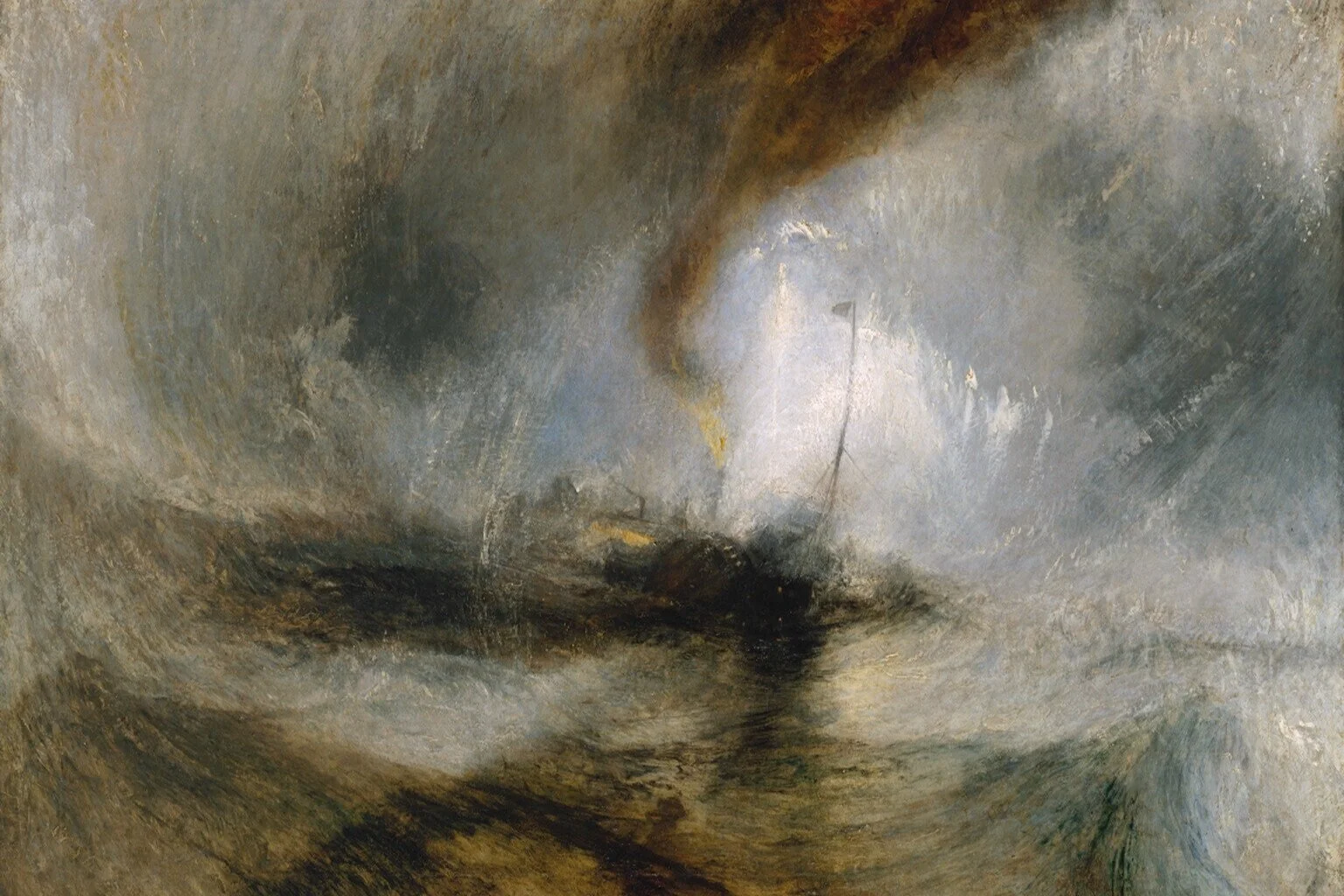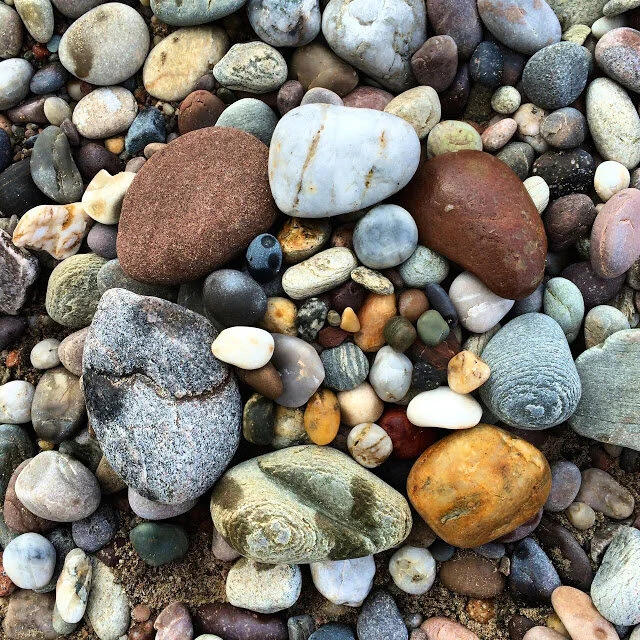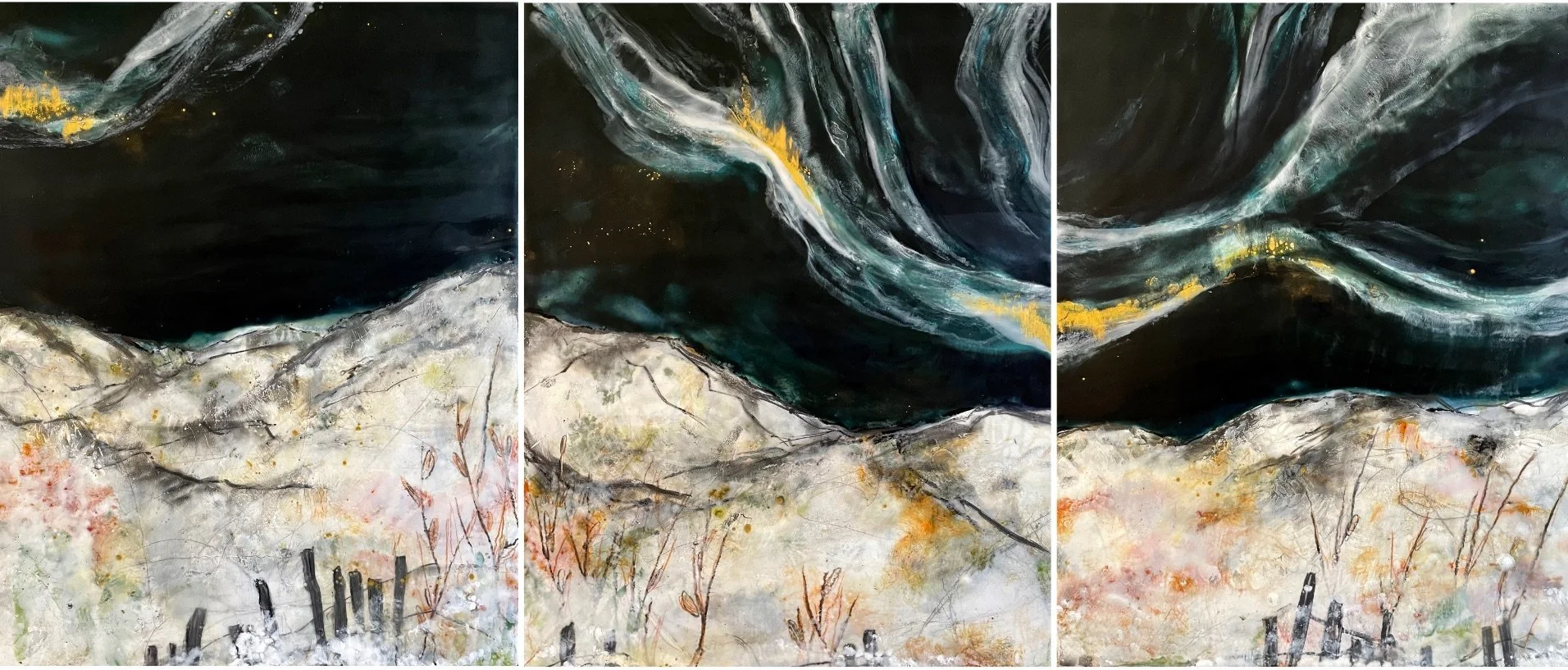Theology of Beauty: A Syllabus
J. M. W. Turner, “Snow Storm” (1842)
The following is syllabus material for the course that I teach on a “Theology of Beauty” at Fuller Theological Seminary. The only thing I'll mention here, of a critical nature, is that a syllabus always involves an unenviable matter of choice. What do you choose to include and what do you choose to exclude? It’s an impossible and often invidious task. So many different resources could have been included here, and perhaps should have been included, but at some point you have to call it quits. You also to ensure that your course remains coherent rather than a Luby’s-Cafeteria-grab-a-thing of incoherent bits and bobs.
Stones off the northeast coast of Scotland
When people talk about beauty, what exactly do they mean by the term? Where do they get their ideas about beauty? What do they hope beauty will achieve? How do they relate the things of beauty to the things of God? How has beauty been conscripted for good or for ill, to serve or to harm the wellbeing society, to advance or to exclude particular members of a community?
Aimee Mullins, “The Aesthetics of Prosthetics”
These are the sorts of questions that I explore with my students in this course. It’s a great deal of fun and nothing about it is ever dull. If you’re curious to know more, you’re always welcome to join us at Fuller Seminary and to jump into the deep end of “the love of learning and the desire for God,” as the Benedictine monk Jean LeClercq described the study of theology.
“Luz ascendente” (The Amen of Creation)
A THEOLOGY OF BEAUTY:
From Pseudo-Dionysius to the Dove Campaign for Real Beauty
COURSE DESCRIPTION
This course explores how different eras of western history and how specific cultural contexts have informed theological ideas about beauty. Beginning with the ancient Hellenistic era, the course reviews Patristic, Medieval, Reformed, Enlightenment, twentieth and twenty-first–century construals of beauty. The goal of the course is a clearer theological understanding the role of beauty in the worship and mission of the church.
REQUIRED READING
Scarry, Elaine. On Beauty and Being Just. Princeton University Press, 1999.
Taylor, W. David O. For the Beauty of the Church. Baker, 2010.
Treier, Daniel J., J. M. Husbands & R. Lundin, eds. The Beauty of God: Theology & the Arts. IVP Academic, 2007.
SECONDARY READING
Carnes, Natalie. Beauty: A Theological Engagement with Gregory of Nyssa, Cascade: 2014.
Brown, Frank Burch. Religious Aesthetics. Princeton University Press, 1989.
Eco, Umberto. Art and Beauty in the Middle Ages. Yale University Press, 1986.
Evdokimov, Paul. The Art of the Icon: A Theology of Beauty, Oakwood, 2012.
Hart, David Bentley. The Beauty of the Infinite: The Aesthetics of Christian Truth. Eerdmans, 2003.
Lane, Belden. Ravished by Beauty: The Surprising Legacy of Reformation Spirituality, Oxford, 2011.
Oleg V. Bychkov and Anne Sheppard, editors. Greek and Roman Aesthetics. Cambridge University Press, 2010.
Seerveld, Calvin. Rainbows for the Fallen World. Radix, 1980.
Sherry, Patrick. Spirit and Beauty: An Introduction to Theological Aesthetics. Clarendon, 2002
Viladesau, Richard. Theological Aesthetics: God in Imagination, Beauty, and Art. Oxford, 1999.
Von Balthasar, Hans Urs. The Glory of the Lord: A Theological Aesthetics Vol I, Crossroad, 1983-91.
COURSE OUTLINE
Week 1: Beauty in Greco-Roman and Patristic perspective
Excerpts from Plato, Aristotle, and Plotinus.
Paul Evdokimov, The Art of the Icon.
Week 2: Beauty in Medieval and Catholic perspectives
Humberto Eco, Art and Beauty in the Middle Ages.
Augustine, The Confessions of Saint Augustine.
Abbot Suger, On the Abbey Church of St. Denis.
Pope John Paul II, “Letter to Artists.”
Pope Benedict XVI, “Meeting with Artists.”
Cecilia Gonzalez-Andrieu, Bridge to Wonder: Art as a Gospel of Beauty.
Watch video about the Basilica of St. Denis.
Week 3: Beauty in Reformed, Wesleyan, and Evangelical perspectives
Jonathan Edwards, On Beauty, ch. 2, “The Beauty of Creation.”
Belden Lane, Ravished by Beauty: The Surprising Legacy of Reformation Spirituality, ch. 1, “The Double Irony of Reformed Spirituality.”
Debra Dean Murphy, Happiness, Health, and Beauty, ch. 3, “Beauty: The Christian Life and the Pursuit of Perfection.”
David Penchansky, "Beauty, Power, and Attraction: Aesthetics and the Hebrew Bible."
Week 4: Beauty in Modern perspectives
Deborah Sokolove, Sanctifying Art, ch. 3, “Visions of Beauty.”
Wladyslaw Tatarkiewicz, “The Great Theory of Beauty and Its Decline,” in Journal of Aesthetics and Art Criticism 31 (1972).
Nicholas Wolterstorff, “Beyond Beauty and the Aesthetic in the Engagement of Religion and Art,” in Theological Aesthetics after Von Balthasar, edited by Oleg V. Bychkov and James Fodor (Canterbury: Aldershot, 2008).
Kathryn B. Alexander, Saving Beauty: A Theological Aesthetics of Nature, Ch. 4, “A Theological Aesthetics of Nature.”
Week 5: Beauty in Contemporary perspectives
Ayana D. Byrde and Lori L. Tharps, Hair Story: Untangling the Roots of Black Hair in America, ch. 6, “The Burden of Proof: Explaining Black Hair Culture.”
Yuriko Saito, “Letting Objects Speak: Beauty in the Japanese Artistic Tradition.”
Watch spoken word poem by poet Amena Brown, “Letter To My Hair.”
Wendy Steiner, Venus in Exile: The Rejection of Beauty in Twentieth-Century Art, Proem, “Psyche’s Pleasure” and Conclusion, “Modeling Beauty.”
Week 6: Beauty & God
Jeremy Begbie, “Created Beauty: The Witness of J. S. Bach,” in The Beauty of God, ch. 1.
W. David O. Taylor, “Spirit and Beauty: A Reappraisal,” Christian Scholars Review 44.1 (Fall 2014).
Makoto Fujimura, Culture Care, ch. 6, “Beauty as Food for the Soul.”
Hans Urs von Balthasar, The Glory of the Lord: A Theological Aesthetics, vol. 1, “Seeing the Form,.”
Irwyn L. Ince Jr., The Beautiful Community: Unity, Diversity, and the Church at its Best, ch. 10, “Our Holy and Beautiful House.”
Week 7: Beauty & Justice
Elaine Scarry, On Beauty and Being Just.
Week 8: Beauty & Sentimentality
Jeremy Begbie, “Beauty, Sentimentality and the Arts,” in The Beauty of God, ch. 2.
John Walford, “The Case for a Broken Beauty,” in The Beauty of God, ch. 4.
Betty Spackman, A Profound Weakness: Christian and Kitsch, Intro and ch. 12, “Eye Witness.”
Week 9: Beauty & Worship
Lauren Winner “The Art Patron,” in For the Beauty of the Church, ch. 3.
John Witvliet, “The Worship,” in For the Beauty of the Church, ch. 2..
Timothy Verdon, Art & Prayer: The Beauty of Turning to God, ch. 2, “Spaces of Prayer.”
Michael Pasquarello III, The Beauty of Preaching, ch. 4, “A Spoken Beauty.”
David Lyle Jeffrey, “Beauty in the Bible and the Beauty of Holiness,” in The Saint John’s Bible and its Tradition.
Week 10: Beauty & the Public Square
Anjan Chatterjee, The Aesthetic Brain: How We Evolved to Desire Beauty and Enjoy Art, “Part I: Beauty (chapters 1-10).”
Robin Tolmach Lakoff & Raquel L. Scherr, Face Value: The Politics of Beauty, ch. 6, “The Pathology of Beauty.”
Nancy Etcoff, Survival of the Prettiest, ch. 7, “Fashion Runway.”
Debra L. Gimlin, Body Work: Beauty and Self-Image in American Culture, ch. 3, “Cosmetic Surgery: Paying for Your Beauty.”
William Hogarth, "Satan, Sin and Death: A Scene from Milton’s ‘Paradise Lost’" (1735–40)
Antony Gormley, “Transport” (made from nails from the south-east transept roof, 2011)
Phaedra Taylor, “Fenced Mountain,” 48 x 20, Encaustic on Wood (2022)
Club-Winged Manakin









